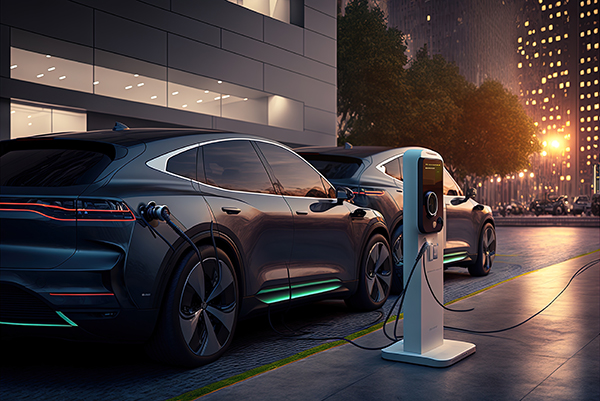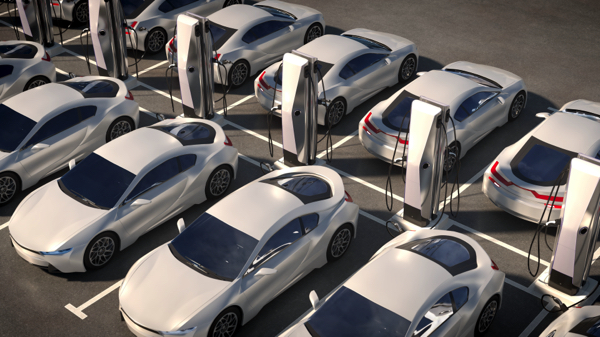
It has been an area of debate in the auto industry for as long as anyone can remember, says Travis Okulski, an editor at Road & Track. On paper, electric motors are fantastic, but in the real world – and especially during these trying times – there are a number of factors that combine to exemplify the weaknesses of EVs.
Pollution
There are two factors that come into play that may not be considered by the EV buyer:
What power is used to charge the car?
Unless you have your own solar generator, the likelihood is that the electric car is actually being charged by coal or gas power, which are the most prevalent power-generating stations in the world. They are also the most heavily polluting. The addition of hundreds of thousands or millions of EVs will put a strain on these plants, increasing pollution on their end.
How are the batteries made and what happens when they are disposed of?
The nickel-hydride batteries that are in electric cars are created in a number of heavily polluting processes, like nickel mining. The nickel-hydride batteries also contain possible carcinogens. To complete the battery construction process, they are shipped all over the world, which adds additional pollutants.
Disposal of the batteries is also an issue. With toxic materials inside, incorrect disposal by a junkyard or manufacturer could destroy the ecosystem of an area for generations.
The strain on the power grid
Over half of all new cars sold in the United States by 2030 are expected to be EVs and that could put a major strain on the nation’s electric power grid – an already aging system built for a world that runs on fossil fuels, according to Katie Brigham in her story for CNBC.
Charging EVs is quite electricity intensive
While a direct comparison with appliances depends on many variables, an owner of a new Tesla Model 3 who drives the national average of around 14,000 miles per year would use about the same amount of electricity charging their vehicle at home as they would on their electric water heater over the course of a year, and about 10 times more electricity than it would take to power a new, energy-efficient refrigerator.
Larger electric vehicles such as the Ford F-150 Lightning would generally use more electricity than a central AC unit in a large home.
In a study commissioned by the California Public Utilities Commission, grid analytics company Kevala forecasts that California alone will have to spend $50 billion by 2035 in distribution grid upgrades to meet its ambitious EV targets.
Energy providers could have the option to switch off EV charging stations remotely to reduce pressure on the electric grid, said Daniel Y. Teng via The Epoch Times.
Charge time
EV charging can take minutes or days. There’s really no way to nail down exactly how long it takes to charge an EV because it depends on a myriad of factors. Battery size, its overall efficiency, the speed of its onboard charge and the power source you’re plugging into are just some of the more obvious variables though there are countless others, US News reported.
Range
EVs are perfectly adequate to go around town or to run short errands. The truth is electric cars inherently limit a journey based on their small range.
Range involves charging the battery all the way to 100 percent, which is not the EV norm. Topping off the last 10–15 percent is when the rate of charging slows considerably and it also leads to increased degradation in battery capacity over time, according to Car and Driver.
For example, Tesla recommends limiting charging to 90 percent for daily use. Even on long-distance trips, the stops are determined more by the charging infrastructure than anything else, and the most expeditious method is to top up the battery just far enough—to maybe 80 or 90 percent, keeping it in the speedy part of the charge-rate curve—to get to the next charger. (Related: EV NIGHTMARE: Man spends 15 hours to travel 178 miles, proving EVs are unsuitable for long-distance travel.)
Infrastructure
As of November 8, 2022, there are 56,256 EV charging stations with about 148,000 charging ports across the country. Approximately 52,375 were available to the public, and 3,816 stations were private, according to the Alternative Fuels Data Center.
While this is enough to sustain the current number of registered EVs, the US would need to roughly triple installation rates over the next eight years to support the anticipated number of EVs on the road by 2030. (Related: EV owners complain about "logistical nightmare" caused by lack of charging stations.)
Cost
Lower-income consumers still see EVs as out of reach, USA Today reported.
Corey Lydstone, founder and CEO of Autolist, a CarGurus company, said the gains of EVs are currently largely limited to higher-income households.
In a survey fielded by Autolist to 3,104 buyers between February and July, 46 percent of those earning less than $30,000 annually cited EVs’ upfront costs as a major hurdle and a third said they had no place to charge where they lived. That compares to the survey average of 42 percent and 27 percent of people who cited these as top concerns, respectively.
Government
Currently, government incentives are encouraging the purchase of electric cars in America with tax credits of up to $7,500 available.
This brings the purchase price in range with comparable traditional models to make them a viable alternative for buyers. But there is only so long a tax incentive can last, and once the credit dries up, it is only a matter of time until electric car sales slow as well.
So while the government is helping in the short term, the long-term effects could be harmful.
Watch the following video about the US power grid – can it handle the EV boom?
This video is from the Daily Videos channel on Brighteon.com.
More related stories:
Ford halts production and shipping of F-150 Lightning EV due to unspecified battery issue.
Electric vehicle entrepreneur struggles to find EV charging station for his car during road trip.
Sources include:
Please contact us for more information.






















